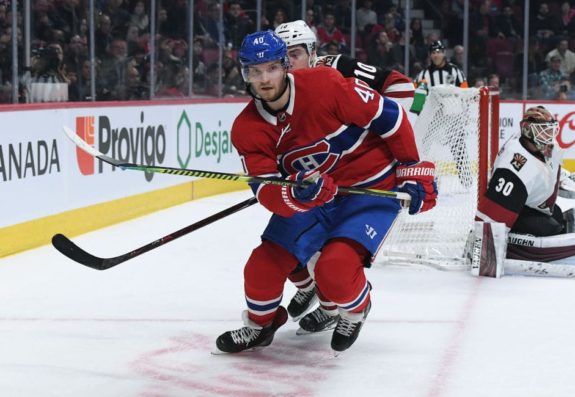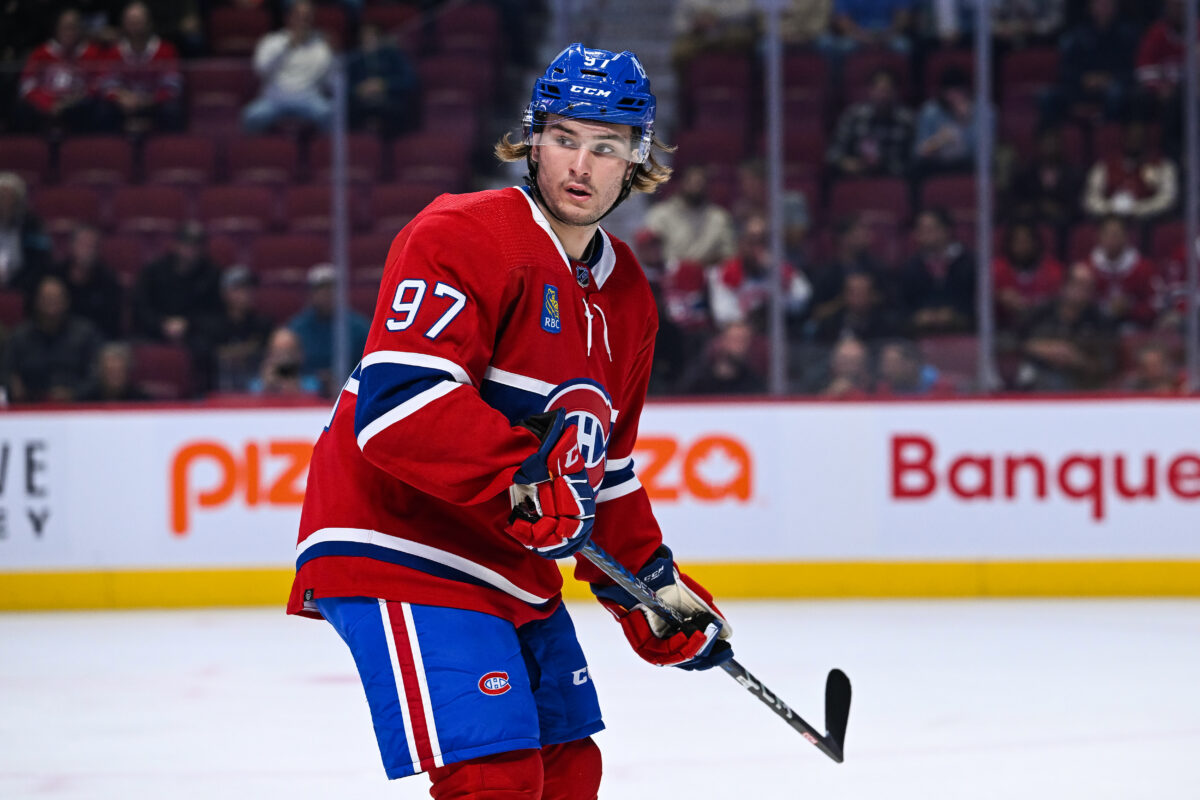The NHL Trade Deadline has come and gone, now what? For the Montreal Canadiens, it won’t be one final push for a playoff spot as those hopes were never realistic this season. No, instead, it will be to focus on individual development. For Montreal and its staff, it will be all hands on deck as they will use the time remaining as an opportunity for the younger members of the club to learn on the job.
Related: Montreal Canadiens Taking a Gamble with Reclamation Projects
While it is not ideally what is done in the NHL, with the team already out of the playoff picture, it provides them the freedom to focus on details that get missed when a team is focused on wins and not on specific skill development. Because to create a Stanley Cup contending club, it doesn’t matter if you miss the playoffs with 60 or 80 points, the goal is to have a sustainable future, with stable players, and that starts in this stage of the rebuild, player development.
Canadiens’ Development Team Working Overtime
During the first practice following the loss to the Toronto Maple Leafs, head coach Martin St. Louis was accompanied onto the ice by his coaching staff, as well as, director of player development Adam Nicholas, hockey development assistant Scott Pellerin, development consultant Paul Byron and “Dr. Shot” Glen Tucker. While making adjustments to help the team win the next game is part of being an NHL professional, it is not the main focus of the remainder of this season, it’s player development. This is a vital component of any rebuild, especially in today’s age when the league is trying to get players in younger and younger.
“Twenty years ago, players became (unrestricted) free agents at 31. It was a much older league, harder for the 19-year-old “kid” to break into and earn a job. It wasn’t a development league.”
– Martin St. Louis
The approach the Canadiens are taking during this rebuild is slow but steady. Their focus is on progression, not perfection, and that is starting to bear fruit, not just for the younger players on the roster, but the veterans as well. As Joel Armia spoke of recently, he was told that no one will have a perfect game and not to focus on past errors. “It’s an important thing I finally understood, but it took me time and I’m continuing to work on it,” said Armia (from ‘Vers un nouveau Joel Armia’, Richard Labbe, La Presse, March 11, 2024).

It is no accident that this aspect has improved for the Canadiens skaters this season as they have a mental skills coach, Jean-François Ménard, on staff to help them address this vital aspect of development. Player development isn’t just working on training, nutrition, or skills, it is also a focus on mental fortitude. In a market like Montreal, it is important to train the mind and psyche to handle personal growth, but also the ability to avoid distractions caused by the media and fans. A healthy mind fosters optimal performance. Athletes who prioritize their mental health are better equipped to manage stress, maintain focus, and regulate emotions during competition. This leads to improved decision-making, consistency, and resilience on the ice.
Canadiens Take Individual Approach
The individual development approach adopted by the organization may feel slow, but for players like Juraj Slafkovsky and Kaiden Guhle, there has been genuine progress in a short time. Playing their young players in increasingly larger roles is a strategy they have taken to heart and are also currently icing the second-youngest team in the NHL. Before he was added to the top line, he showed he deserved the promotion as his offensive numbers suffered despite him having good underlying possession metrics.
A quick look at the progression made by Slafkovsky shows the value of this focused plan. He has gone from a player who was unable to compete regularly against middle-six competition to a top-line power forward who can play on a line matched up against another team’s best and still come out in the positives in puck possession and points.
Looking elsewhere, there is Alex Newhook. After having been acquired this past summer from the Colorado Avalanche, the hope was for Newhook to step right in and become an offensive leader. However, the 23-year-old forward needed time to adjust to new surroundings. He also had to deal with an injury that had him miss three months of the season. Despite these issues, he has provided the team with some quality hockey, scoring 10 goals and 22 points in 38 games, which would be a nearly 50-point pace over a full 82-game season. Also, he was able to work his way onto the power play (PP) through his deceptiveness, puck handling, mobility and accurate shooting. His addition to the bumper spot (high slot) has provided the PP with a pressure release valve that allows the other members to reset, and generate some space to maneuver. He is progressing in his development and is trending toward becoming a quality top-six forward.
Canadiens Prospect Growth
But development is not isolated to only those who have been on the NHL roster full-time this season. The organization is heavily invested in the development of its American Hockey League (AHL) affiliate players as well. They have access to all of the same development coaches as the Canadiens skaters do. This development approach is starting to pay dividends at the lower levels now as well. Some of the youngsters have seen NHL action, and others may not return to the AHL next season.

Starting with Joshua Roy, his four goals and nine points in 20 games, while playing an average of just over 12 minutes per game. With a Corsi For percentage of 49.9, it shows that he is already capable of going shot for shot with top-nine NHL competition, as a rookie.
“He’s spent enough time with us now to know what he needs to improve and how to do it. You can tell he isn’t nervous on the ice and that he has an intelligence at both ends of the rink and that he is not intimidated by any moment of the game.”
– Martin St. Louis
Montreal is not only providing him with assets to help him develop his physical and mental skills, but they are also providing him opportunities to apply what he’s learned. This is building his confidence and experience. While this won’t pay off now, it will as soon as next season as he has proven himself already to be a top-nine forward at the NHL level.
Logan Mailloux, arguably the best player on the Laval Rocket right now, can get a call-up, and even deserve one, but there is no rush yet as he is getting what he needs in Laval. He is playing a large role with lots of ice time and the learning objective to be able to play his own game regardless of the defence partner he lines up with on any shift. His 13 goals and 37 points in 57 games as a rookie put him fifth in scoring in the AHL among all defencemen.
But if you want to play in the NHL, you have to learn to play defensively, and that has vastly improved in his time in Laval. His head coach, Jean-Francois Houle said, “He has come down here with a really good attitude. He’s showing he can produce offensively and he’s hard to play against. That’s really good for a young defenseman” (from ‘Logan Mailloux knows his time will come with the Canadiens’, Herb Zurkowsky, Montreal Gazette, Jan. 25, 2024). This is an example of a management team showing patience with a player. Mailloux had only played 100 games in junior hockey and needed time to mature his game. Not rushing him into the NHL should pay off, and so far it looks like it should. He is an AHL All-Star, has already tied the franchise record for goals by a defenceman and is expected to break it by the end of the season. His adaptation to the professional game has impressed many in the media.
There have been forward steps in development taken by the Canadiens’ youth this season that show growth over last season, but also significant growth during the season. Whether it be those mentioned above, or Sean Farrell and Emil Heineman, among others, these show different stages of development that have all been tailored to the player. Also, this reveals that the modernized departments are starting to play a key role in the rebuild. All of this proves that the remaining schedules in both the NHL and AHL are not wasted time without playoffs. It gives management a better understanding of exactly what these players can provide, and where they are in their development arcs.
